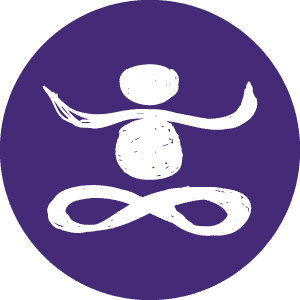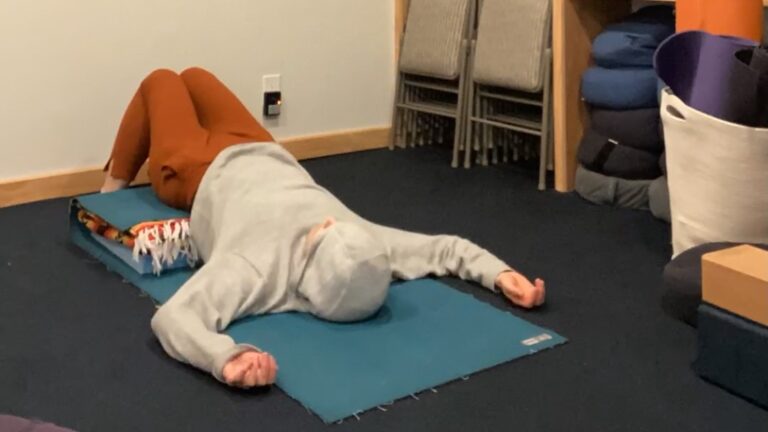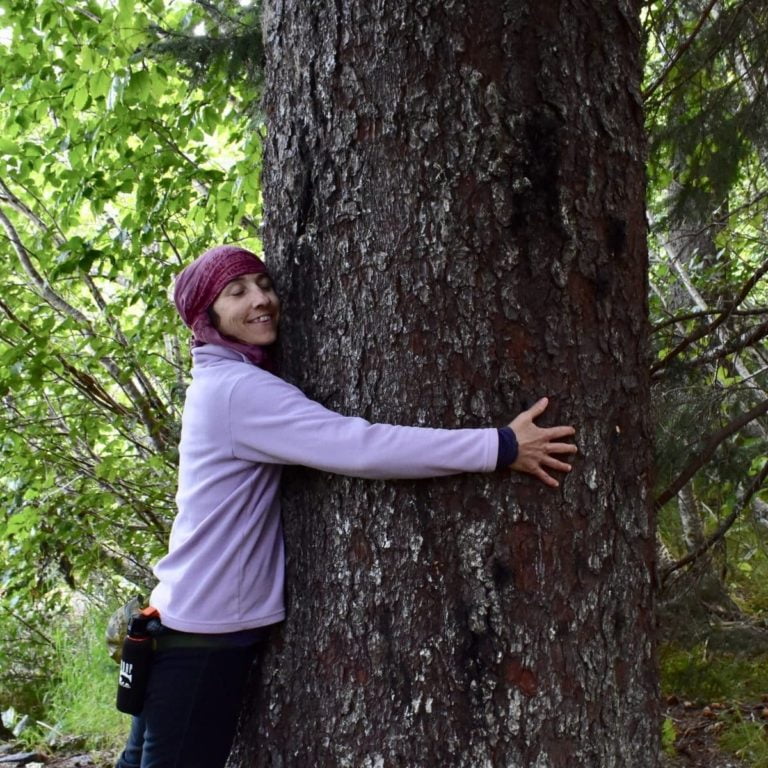It’s Monday, again, but just like that it’s different, again. The retreat effect has once again brought me to a place of ease, joy, optimism, peace, and compassion. The retreat effect was with me last night when I washed the dishes, this morning when I vacuumed the studio, and when I slipped into the hot tub for a few minutes before getting online.
I have been participating in retreats since I was an adolescent. I’ve been honored to facilitate dozens of them over the last twenty years and I’m convinced. The retreat effect is guaranteed when we go. When we create a clearing in our lives for immersive, intentional practice, we get better at doing what we go there intending to do. It sounds so simple. It is so profound.
For those of you who haven’t been on a retreat, yet, I’ll share some of the guiding principles we practiced on our Denali View Retreat this weekend. If you can tap into some of your own experiences that come to mind when I’m describing ours, you too may be able to access the retreat effect (and with it the motivation to continue.)

HOME
The retreat effect includes a strong sense of belonging. There is comfort, safety, nourishment, acceptance, forgiveness, and familiarity that we find, more and more easily, inside of ourselves, with other people, on our yoga mats and meditation cushions, and, truly anywhere we find ourselves. We realize that we are truly at home in our bodies.
The sound of OM, or even just a simple “Hmmmmm” sound can bring us back to our bodies. On retreat we practiced generating this sound, hearing this sound, and absorbing this sound… over and over again. It became familiar, comforting, safe, and nourishing. It is the sound of satisfaction (think dessert!) and openness (think curiosity.) When we hear it, we are reminded of these qualities and can access them more easily.
In the Yoga Sutras of Patanjali there is reference to a collection of attributes that are known as the “supreme abodes” of the mind/heart. I’ll refer to them as the “retreat effects” in the paragraphs below. They are friendliness, compassion, equanimity, and joy. We can orient to these to increase our sense of belonging. We used “supreme abodes” to guide our mind/heart in practice this weekend and they are largely responsible for the retreat effect that I am enjoying today. I’ll share some more about these states below and hope that it will prompt memory and possibility for you so that you can enjoy the retreat effect too!


Retreat effect 1/4: Friendliness
One group of retreat participants decided to relabel this retreat effect as “doggyness.” This state of being is one where, like our favorite dog friends, we assume that everyone is a friend we haven’t met yet.
In Sanskrit the term for this cause is “metta” and is often translated as lovingkindness or benevolence. I like friendliness.
I practiced this with my 9-year-old niece when I took her into the city on the subway for the first time. She was nervous. She thought people looked unfriendly. I encouraged her to consider smiling, making eye contact, saying hello… I encouraged her to be the one who set the tone for the encounter. Later that day she excitedly reported to me that “it worked!” Now she wants to live in the city where she sees friends everywhere. (Of course, I’ve oversimplified the range of possibilities here and you can be assured that my niece is also encouraged to practice discrimination and boundary setting.)
These practices are not expected to be applied out of context. Truly, it is the integration of their possibility into all of the nooks and crannies of our lives where the magic of the retreat effect takes hold!
On retreats, it is easier to assume the relative safety, support, and shared intention that brings us together. Much of the effort that we may otherwise spend discerning intention and protecting ourselves from unsafe situations we can direct instead towards growth. On retreat we can increase our ability to see friendliness in others, and access it ourselves.
Retreat effect 2/4: Compassion
Another retreat effect can be an increased ability to access compassion. This is the ability to see the reality of the human experience with its inherent difficulties, and disappointments. This applies equally to ourselves and others. In this way, we are more able to see the connections or similarities between us. When we see more of ourselves in others and more of them in ourselves, we tend to feel more of a sense of belonging. We feel more at home.
Compassion opens our minds and hearts to let others in. It also allows us to tolerate, even embrace parts of ourself that we might otherwise be trying to ignore or even obliterate. This kind of acceptance, love, support and encouragement is what I hope we all can agree that everyone deserves.
If you find yourself feeling like you don’t belong (or maybe that someone else doesn’t,) I’d encourage you to consider practicing compassion. By acknowledging disappointment, distance, dissatisfaction, or doubt, you will be touching on a tender place that resides within all of us. It is home where we go to lick our wounds. Compassion is a place where the heart is at home.
Retreat effect 3/4: Equanimity
I like to acknowledge the comfort that the practice of equanimity offers very early in a retreat. This past weekend we had a couple of periods of “noble silence.” It was the easiest and most enjoyable part of the weekend for some participants, the most difficult for others. Understanding that there is a range of preference, and, being willing to practice being in a place where our personal preference is not prioritized can help us to cultivate equanimity.
The mind/heart (you’ll see me use this term interchangeably with “mind” and “heart”) becomes content when it is centered in this way. Equanimity is more closely related to tolerance than to apathy. Equanimity acknowledges and includes a wide range of possibilities, emotions, and preferences. It prioritizes presence.
Retreat effect 4/4: Joy
To be more specific, this retreat effect is not just the emotion that we know as joy. This is a pervasive and interconnected sense of lightness, pleasure, gratitude, pride, and awe that comes with an awareness of being. It is, in the Yoga Sutras of Patanjali, described more specifically as sympathetic or appreciative joy to make an important distinction between this retreat effect and the more fleeting sense of pleasure that we might otherwise assume it to be.
The joy of being, amidst other beings, is where we feel most at home. Introverts, don’t despair, this doesn’t mean that you need to spend any more time at parties to enjoy the retreat effect. In fact, it might be helpful to spend less time with other people to find that you can access the joy of connecting to life more easily.
The retreat effect is personal and pervasive. It is also incredibly reliable! Retreat practice is intentional. It is wise. It is courageous. It is open-minded and open-hearted.











